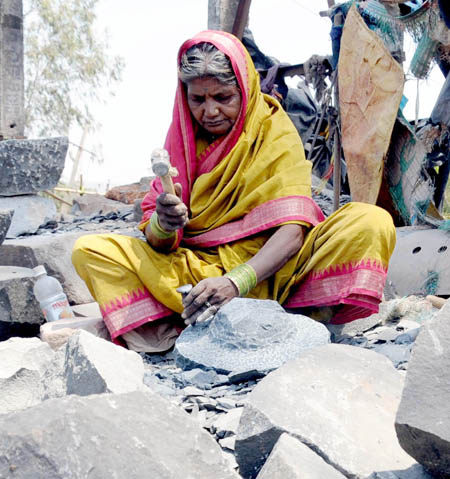
*The majority of the world's 1.3 billion absolute poor are women.
*On an average, women receive between 30 and 40 per cent less pay than men earn for the same work.
*The United Nations Population Fund (UNFPA) estimates that perhaps as many as 5,000 women and girls a year are killed by members of their own families, in the name of honor killing.
*Around 343,000 women die all around the globe during child birth.
It’s been a hundred years since Women’s day was first celebrated and still we see women all over the world, in our societies struggling and fighting for their basic right – the right to live a dignified life. A man and a woman – the Homo sapiens, have together been responsible for the progress of this race but more often than not women have been denied their due credit.
Since, the time of birth the girl plays roles and carries responsibilities which make a family, a society and thus a country. A daughter, a sister, a wife, a mother; she has to bear the burden of protecting the honor of the family and nurturing it. A woman works thrice as hard as a man to prove her capabilities and worth, yet never receives her work’s worth.
Ironical how India is one of the very few countries which has seen a lady Prime minister and has a woman President yet the condition of women in the country is one of the worst in the world. More than 65% women population of the country lives under the poverty line. Being a woman in adverse conditions makes things even worse – she will be the first to sleep hungry, last to receive that drop of medicine. India ranks 127th in the world’s maternity mortality rate list, way behind countries like Iran, Uzbekistan.
Irom Sharmila is on a hunger strike for more than a decade demanding her right to a dignified existence. Nobody seems to care. Her fault – she is a woman fighting for woman’s right. Whether its peace or war, a woman bears the brunt, of the worst kind. We worship the Goddessess and hold them in highest regards in our country yet we have not been able to develop the mental capacity to grant the women in our society their due respect.
The first official celebration of Women's Day happened on March 19 in 1911 in Austria, Denmark, Germany and Switzerland. There was a lot of turbulence in industrialized societies; with women increasingly demonstrating against oppressive working conditions, poor pay and inequality. This also coincided with the rising demand by women for voting rights in various countries and to hold public office. They also protested against sex discrimination in employment. In 1932, we saw women in the US fighting to be exempted from their second-class-citizen status. In 1975, which was designated as International Women’s Year, the United Nations gave official sanction to, and began sponsoring, International Women's Day.
A hundred years down the line, the theme for 2012 International Women’s Day has been declared as Empower Women – End Hunger and Poverty by the United Nations. Poverty snatches away the childhood, right to education, decent living conditions, and basic healthcare – the worst hit are the women. And as mentioned earlier the first one to make the sacrifice is the woman in the family. To truly empower women we have to ensure that the fairer sex gets its fair share in its life time. Fight that lasted a century still continues.
The longevity and ingrained complexity of patriarchy proves to be the biggest stumbling in the path of women’s empowerment. The mindset arising out of this system of society has always led gender discrimination. In the 20th century, with more women in the boardroom, greater equality in legislative rights, and an increased critical mass of women's visibility as impressive role models in every aspect of life, one could think that women have gained true equality. The unfortunate fact is that women are still not paid equally to that of their male counterparts, women still are not present in equal numbers in business or politics, and globally women's education, health and the violence against them is worse than that of men.
Before we sit down to celebrate that one lady CEO or the one lady Commissioner, a thought should be spared in the direction of those women who do not even get a chance to make the most basic decisions about their own lives. Women all over the world live under the threat arising from the strong patriarchal society, be it mortal or otherwise. To empower these souls should be the ultimate goal and the day it’s done can 8th of March be celebrated in its true spirit.

The writer is a student of Manipal Institute of Communication






Comments
Add new comment